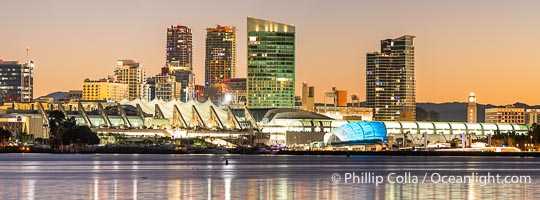
San Diego Convention Center Skyline and Waterfront at Sunrise. San Diego Convention Center, located in the Marina District of downtown San Diego. Built in 1989, the San Diego Convention Center offers 525,700 square feet of exhibit space. It is noted for its distinctive "sails" made of Teflon-coated fiberglass suspended over the central exhibition hall, aptly named Sails Pavilion.
Location: San Diego, California
Image ID: 40046
Panorama dimensions: 5186 x 13999
Location: San Diego, California
Image ID: 40046
Panorama dimensions: 5186 x 13999
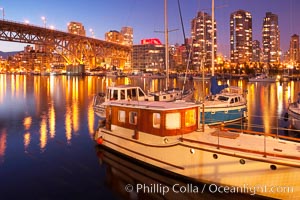
Yaletown section of Vancouver at night, including Granville Island bridge (left), viewed from Granville Island with sailboat in the foreground.
Location: Granville Island, Vancouver, British Columbia, Canada
Image ID: 21169
Location: Granville Island, Vancouver, British Columbia, Canada
Image ID: 21169
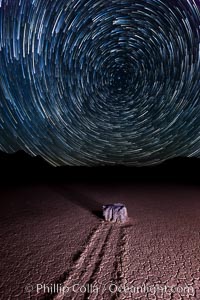
Racetrack sailing stone and star trails. A sliding rock of the Racetrack Playa. The sliding rocks, or sailing stones, move across the mud flats of the Racetrack Playa, leaving trails behind in the mud. The explanation for their movement is not known with certainty, but many believe wind pushes the rocks over wet and perhaps icy mud in winter.
Location: Racetrack Playa, Death Valley National Park, California
Image ID: 27671
Location: Racetrack Playa, Death Valley National Park, California
Image ID: 27671
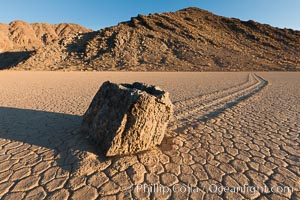
Sailing stone on the Racetrack Playa. The sliding rocks, or sailing stones, move across the mud flats of the Racetrack Playa, leaving trails behind in the mud. The explanation for their movement is not known with certainty, but many believe wind pushes the rocks over wet and perhaps icy mud in winter.
Location: Racetrack Playa, Death Valley National Park, California
Image ID: 27689
Location: Racetrack Playa, Death Valley National Park, California
Image ID: 27689
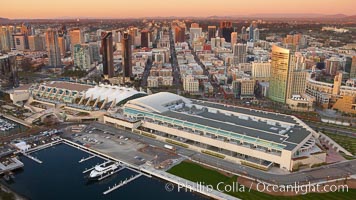
San Diego Convention Center, located in the Marina District of downtown San Diego. Built in 1989, the San Diego Convention Center offers 525,700 square feet of exhibit space. It is noted for its distinctive "sails" made of Teflon-coated fiberglass suspended over the central exhibition hall, aptly named Sails Pavilion.
Location: San Diego, California
Image ID: 22290
Location: San Diego, California
Image ID: 22290
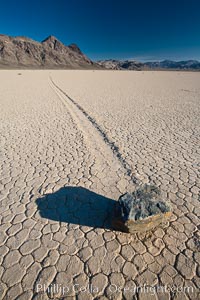
A sliding rock of the Racetrack Playa. The sliding rocks, or sailing stones, move across the mud flats of the Racetrack Playa, leaving trails behind in the mud. The explanation for their movement is not known with certainty, but many believe wind pushes the rocks over wet and perhaps icy mud in winter.
Location: Racetrack Playa, Death Valley National Park, California
Image ID: 25239
Location: Racetrack Playa, Death Valley National Park, California
Image ID: 25239
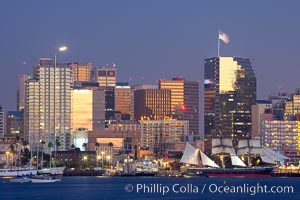
San Diego city skyline at dusk, viewed from Harbor Island, the Star of India at right.
Location: San Diego, California
Image ID: 14533
Location: San Diego, California
Image ID: 14533
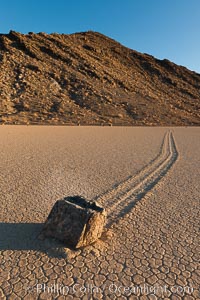
Sailing stone on the Racetrack Playa. The sliding rocks, or sailing stones, move across the mud flats of the Racetrack Playa, leaving trails behind in the mud. The explanation for their movement is not known with certainty, but many believe wind pushes the rocks over wet and perhaps icy mud in winter.
Location: Racetrack Playa, Death Valley National Park, California
Image ID: 27691
Location: Racetrack Playa, Death Valley National Park, California
Image ID: 27691
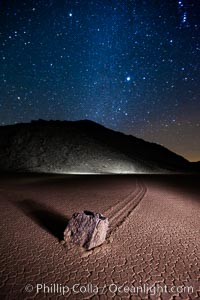
Racetrack sailing stone and Milky Way, at night. A sliding rock of the Racetrack Playa. The sliding rocks, or sailing stones, move across the mud flats of the Racetrack Playa, leaving trails behind in the mud. The explanation for their movement is not known with certainty, but many believe wind pushes the rocks over wet and perhaps icy mud in winter.
Location: Racetrack Playa, Death Valley National Park, California
Image ID: 27640
Location: Racetrack Playa, Death Valley National Park, California
Image ID: 27640
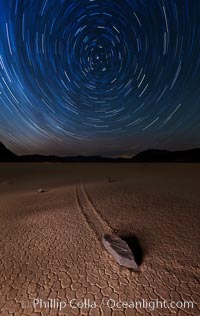
Racetrack sailing stone and star trails. A sliding rock of the Racetrack Playa. The sliding rocks, or sailing stones, move across the mud flats of the Racetrack Playa, leaving trails behind in the mud. The explanation for their movement is not known with certainty, but many believe wind pushes the rocks over wet and perhaps icy mud in winter.
Location: Racetrack Playa, Death Valley National Park, California
Image ID: 27667
Location: Racetrack Playa, Death Valley National Park, California
Image ID: 27667
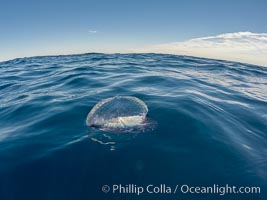
Velella, By The Wind Sailor, colonial hydroid, adrift on the ocean surface.
Species: By the wind sailor, Velella velella
Image ID: 30162
Species: By the wind sailor, Velella velella
Image ID: 30162
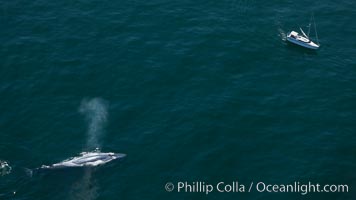
A blue whale swims near a sailboat. The blue whale is the largest animal ever to have lived on Earth, exceeding 100' in length and 200 tons in weight.
Species: Blue whale, Balaenoptera musculus
Location: Redondo Beach, California
Image ID: 25959
Species: Blue whale, Balaenoptera musculus
Location: Redondo Beach, California
Image ID: 25959

The Star of India is tied to her dock along the waterfront of San Diego harbor.
Location: San Diego, California
Image ID: 14530
Location: San Diego, California
Image ID: 14530
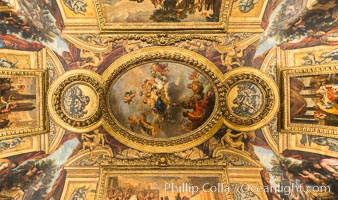
Ceiling art detail, Chateau de Versailles, Paris, France.
Location: Chateau de Versailles, Paris, France
Image ID: 28071
Location: Chateau de Versailles, Paris, France
Image ID: 28071
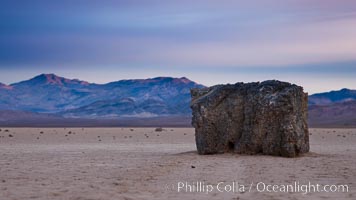
Sunrise on the Racetrack Playa. The sliding rocks, or sailing stones, move across the mud flats of the Racetrack Playa, leaving trails behind in the mud. The explanation for their movement is not known with certainty, but many believe wind pushes the rocks over wet and perhaps icy mud in winter.
Location: Racetrack Playa, Death Valley National Park, California
Image ID: 27701
Location: Racetrack Playa, Death Valley National Park, California
Image ID: 27701
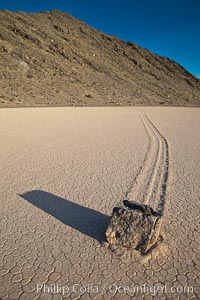
A sliding rock of the Racetrack Playa. The sliding rocks, or sailing stones, move across the mud flats of the Racetrack Playa, leaving trails behind in the mud. The explanation for their movement is not known with certainty, but many believe wind pushes the rocks over wet and perhaps icy mud in winter.
Location: Racetrack Playa, Death Valley National Park, California
Image ID: 25243
Location: Racetrack Playa, Death Valley National Park, California
Image ID: 25243
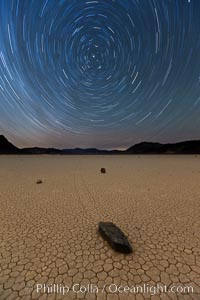
Racetrack sailing stone and star trails. A sliding rock of the Racetrack Playa. The sliding rocks, or sailing stones, move across the mud flats of the Racetrack Playa, leaving trails behind in the mud. The explanation for their movement is not known with certainty, but many believe wind pushes the rocks over wet and perhaps icy mud in winter.
Location: Racetrack Playa, Death Valley National Park, California
Image ID: 27668
Location: Racetrack Playa, Death Valley National Park, California
Image ID: 27668
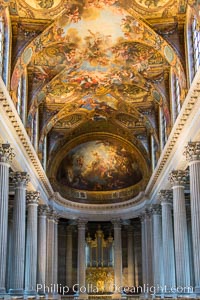
Royal Chapel of Versailles, dedicated to Saint Louis, patron saint of the Bourbons, the chapel was consecrated in 1710. It was here that Louis XVI of France was wed to Marie-Antoinette. The ceiling represents God the Father in His Glory Bringing to the World the Promise of Redemption and was painted by Antoine Coypel.
Location: Chateau de Versailles, Paris, France
Image ID: 28250
Location: Chateau de Versailles, Paris, France
Image ID: 28250
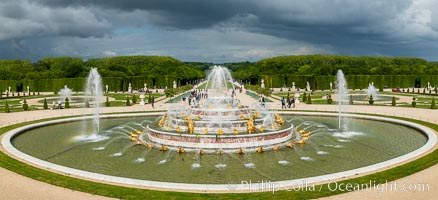
Bassin de Latone, Basin of Leto, Chateau de Versailles, Paris.
Location: Chateau de Versailles, Paris, France
Image ID: 35621
Panorama dimensions: 4820 x 10547
Location: Chateau de Versailles, Paris, France
Image ID: 35621
Panorama dimensions: 4820 x 10547
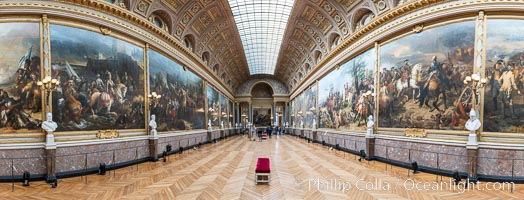
Gallery in Chateau de Versailles, Paris.
Location: Chateau de Versailles, Paris, France
Image ID: 35622
Panorama dimensions: 6766 x 17738
Location: Chateau de Versailles, Paris, France
Image ID: 35622
Panorama dimensions: 6766 x 17738
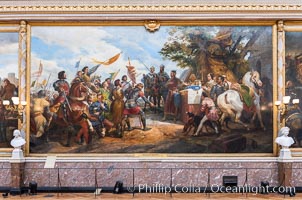
The Battle of Bouvines on 27 July 1214. Artist: Vernet, Horace (1789-1863), Chateau de Versailles, Paris.
Location: Chateau de Versailles, Paris, France
Image ID: 35623
Location: Chateau de Versailles, Paris, France
Image ID: 35623

Statue, Chateau de Versailles, Paris.
Location: Chateau de Versailles, Paris, France
Image ID: 35624
Location: Chateau de Versailles, Paris, France
Image ID: 35624

Marie Antoinette with her two eldest children, Marie-Thérèse Charlotte and the Dauphin Louis Joseph, in the Petit Trianon’s gardens, by Adolf Ulrik Wertmüller, Chateau de Versailles, Paris.
Location: Chateau de Versailles, Paris, France
Image ID: 35625
Location: Chateau de Versailles, Paris, France
Image ID: 35625
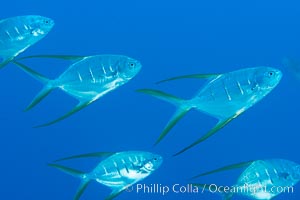
Trachinotus rhodopus Gafftopsail pompano, Isla San Diego, Sea of Cortez.
Location: Isla San Diego, Baja California, Mexico
Image ID: 33522
Location: Isla San Diego, Baja California, Mexico
Image ID: 33522
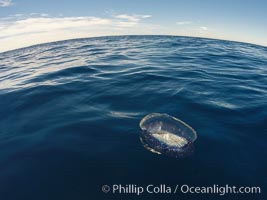
Velella, By The Wind Sailor, colonial hydroid, adrift on the ocean surface.
Species: By the wind sailor, Velella velella
Image ID: 30161
Species: By the wind sailor, Velella velella
Image ID: 30161
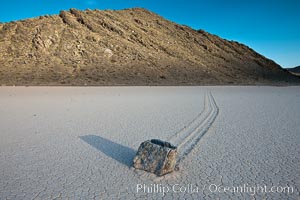
A sliding rock of the Racetrack Playa. The sliding rocks, or sailing stones, move across the mud flats of the Racetrack Playa, leaving trails behind in the mud. The explanation for their movement is not known with certainty, but many believe wind pushes the rocks over wet and perhaps icy mud in winter.
Location: Racetrack Playa, Death Valley National Park, California
Image ID: 25266
Location: Racetrack Playa, Death Valley National Park, California
Image ID: 25266
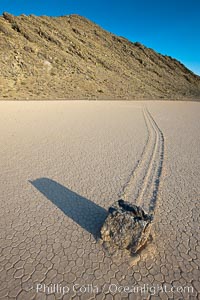
Sailing stone on the Death Valley Racetrack playa. The sliding rocks, or sailing stones, move across the mud flats of the Racetrack Playa, leaving trails behind in the mud. The explanation for their movement is not known with certainty, but many believe wind pushes the rocks over wet and perhaps icy mud in winter.
Location: Racetrack Playa, Death Valley National Park, California
Image ID: 25328
Location: Racetrack Playa, Death Valley National Park, California
Image ID: 25328
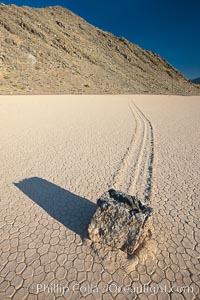
A sliding rock of the Racetrack Playa. The sliding rocks, or sailing stones, move across the mud flats of the Racetrack Playa, leaving trails behind in the mud. The explanation for their movement is not known with certainty, but many believe wind pushes the rocks over wet and perhaps icy mud in winter.
Location: Racetrack Playa, Death Valley National Park, California
Image ID: 25330
Location: Racetrack Playa, Death Valley National Park, California
Image ID: 25330
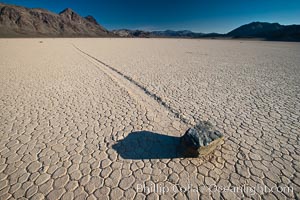
Sailing stone on the Death Valley Racetrack playa. The sliding rocks, or sailing stones, move across the mud flats of the Racetrack Playa, leaving trails behind in the mud. The explanation for their movement is not known with certainty, but many believe wind pushes the rocks over wet and perhaps icy mud in winter.
Location: Racetrack Playa, Death Valley National Park, California
Image ID: 25321
Location: Racetrack Playa, Death Valley National Park, California
Image ID: 25321
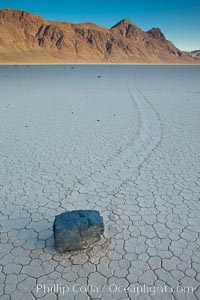
A sliding rock of the Racetrack Playa. The sliding rocks, or sailing stones, move across the mud flats of the Racetrack Playa, leaving trails behind in the mud. The explanation for their movement is not known with certainty, but many believe wind pushes the rocks over wet and perhaps icy mud in winter.
Location: Racetrack Playa, Death Valley National Park, California
Image ID: 25325
Location: Racetrack Playa, Death Valley National Park, California
Image ID: 25325